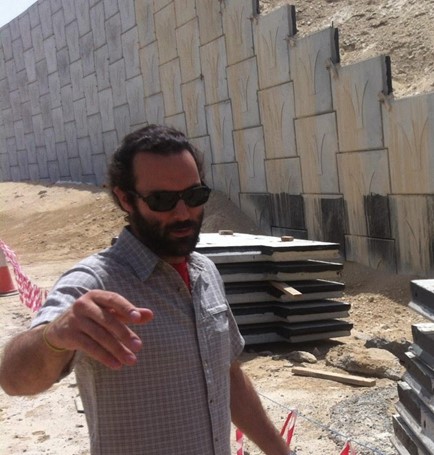IGS Sustainability Calculator
Geosynthetics Sustainability Benefits Calculator
The IGS has developed a Geosynthetics Sustainability Benefits Calculator that allows users to quantify the sustainability benefits of geosynthetics, across a range of typical applications.
An assessment of environmental impact is increasingly required, often when bidding for infrastructure projects. This requires a whole lifecycle approach to all materials used in construction, including geosynthetics. There is an opportunity to showcase the benefits of geosynthetics when compared with traditional materials.
The IGS has partnered with One Click LCA, a leading provider of automated life cycle assessment software, to develop templates for common constructions using geosynthetics. The calculator takes the form of case studies housed on the One Click LCA website.
All IGS members are free to view the case studies at any time. For those who wish to develop their own, project-specific calculations, there is the option to purchase a discounted commercial license.
These case studies illustrate benefits calculated using manufacturer-supplied Environmental Product Declarations (EPDs). The calculations can be adapted to a specific context and can be performed using the relevant standards for each world region.
These templates cover the following types of construction:
- Landfill Construction – Drainage: Based on a comparative life cycle assessment of geosynthetics versus conventional materials published by EAGM/ ETH Zürich and ESU-Services Ltd, the original case study can be found here.
- Road Foundation Stabilization (EU): Based on a comparative life cycle assessment of geosynthetics versus conventional materials published by EAGM/ ETH Zürich and ESU-Services Ltd, the original case study can be found here.
- Slope Retaining Wall: Based on a comparative life cycle assessment of geosynthetics versus conventional materials published by EAGM/ ETH Zürich and ESU-Services Ltd, the original case study can be found here.
- Road Course Stabilisation (US): Based on GMA White Paper 44 “Relative Sustainability of Road Construction/Repair: Conventional Materials versus Geosynthetic Materials”.
- Non-Woven Paving Fabrics: Based on GMA White Paper 1 “Geosynthetics in pavement systems applications: geogrids and geotextiles”, and the paper “Evaluation of the Effectiveness of Geotextile Separation and Filtration in Mitigating Pumping of Subgrade Particles into Overlaying Granular Layers in Pavement Systems”.
- Canal Lining with Geosynthetics: Based on TC-Hydraulics’ workshop presentation “Geosynthetics in Canals: Applications and Performance”, and the paper “Applications of Geosynthetics to Irrigation, Drainage and Agriculture”.
- Landfill lining (GCL vs CCL): Based on Geosynthetic Institute White Paper 37 “Current Status (2018) of U.S. State Environmental Agencies Regarding Selected Landfill Liner and Cover Regulations”, the paper “Hydraulic Performance of Geosynthetic Clay Liners (GCLs) Compared with Compacted Clay Liners (CCLs) in Landfill Lining Systems, and the paper “Hydraulic Performance of a Composite Bottom Liner in a Municipal Solid Waste Landfill”.
- Drainage Geocomposite vs sand/gravel: Based on GeoAmericas 2020 paper “Performance of High-Quality Drainage Geocomposites and Analysis of the Carbon Footprint vs. Conventional Solutions”.
Find out more about the IGS templates on the One Click LCA website by watching this video:
Each case study represents a typical application and has been developed by geosynthetics experts, drawing on previously published papers.
For example, the template for Road Foundation Stabilization (EU) compares a conventional road construction with two different geosynthetic designs and a cement/lime stabilization structure. In each case it is possible to view the specific materials used in the calculation, along with factors such as materials transportation distances, wastage and end-of-life considerations. Results can be viewed in a variety of formats, including life cycle stages.
The templates created by the IGS can be viewed exclusively by IGS Members. They are available to view on a “read-only” basis. Members who chose to purchase their own OCLCA user licence will be able to replicate the IGS templates and perform their own calculations, according to their specific needs.
To access the IGS templates on the OCLCA website, Members need to do two things:
i) Register as a free user with OCLCA (please use the same email address that you use for your IGS membership)
ii) Apply to the IGS using the button below. This will allow us to verify your membership. We will then assign you access rights within 48 hours.
Disclaimer
We have taken every care to produce templates that represent typical geosynthetic applications. However, the results are illustrative only and cannot be used for any purpose other than instruction. They are only as good as the available data, and calculations standards for one region should not be used to provide estimates for projects where different standards apply. The examples provided do not indicate an IGS preference for any particular geosynthetics construction method, product, manufacturer or service provider. It is the responsibility of each user to familiarise themselves with the commercial software.
Feedback
We welcome any feedback you may have on the Sustainability Benefits Calculator. Please complete this form. All comments will help us evaluate the impact of the Calculator and shape future releases.
Frequently Asked Questions
Because they have been developed by the IGS for illustrative purposes only, and not as working templates.
No. Access is free for IGS Members who have paid their annual IGS membership fee.
Register with OneClickLCA (OCLCA) and contact the IGS using the “register” button. We will ask for your name, membership number and the email address you use for your IGS membership.
Within two working days (Monday-Friday), based on US hours and holidays.
We aim to provide access sooner, but as we have to verify that all applicants are paid-up Members, this requires a manual intervention, and this takes some time.
We will email you.
If we are unable to grant you access for any reason, we will explain why.
Unlimited, but all must have been granted access.
You can find tutorials and further information on the IGS website.
All technical assistance is accessed via the OCLCA user help function.
We regret we are unable to provide technical assistance. We have partnered with a commercial provider who can offer the technical help you may need. The calculator was developed by the IGS Sustainability committee chaired by Boyd Ramsey and Preston Kendall. You may wish to contact them to discuss additional support, outside of the IGS function and framework.
Only if you purchase a OCLCA user licence.
At this stage we have published a limited number for trial purposes. As we build experience with the tool, and subject to membership demand, we may create additional templates.
There are many licensing options available. Please refer to the OCLCA website for the latest information.
Yes. All IGS Members qualify for a 10% discount for the first year on whichever license they purchase. We are the only organisation whose membership has such a discount.
Inform OCLCA of your IGS membership at the time of purchase. Include your membership number as proof.
It was impractical for the IGS alone to develop highly sophisticated software such as this, or to build and maintain the extensive databases to underpin the calculations, or to offer technical support services. The OCLCA tool is already well-established in markets and will therefore be widely recognised by the clients of IGS members.
No. Any specific products are for illustrative purposes only.
The templates were created on behalf of the IGS by geosynthetics experts at the Universitat Politècnica de Catalunya Barcelona Tech (UPC), Spain and at George Mason University, Virginia USA
The lifecycle stages are as follows:
A1: Raw material extraction
A2: Transport to manufacturing site
A3: Manufacturing
A4: Transport to construction site
A5: Installation / Assembly
B1-B5: Use stages. Stage B3, Repair, is relevant to geosynthetics
C1-C4: End of life stages
The templates are published as illustrations only. If you opt to purchase a licence, you can replicate the templates and adapt them to non-EU standards as required.
Do you want to join us?
Membership in the IGS is a valuable investment for anyone interested in the engineering and geosynthetics industry.
Latest News
- April 11, 2025
- April 7, 2025
- April 3, 2025






















